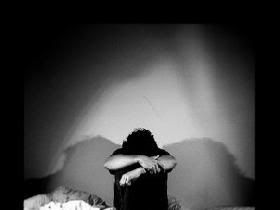 Anxiety disorders. Anxiety Disorders, mental illnesses in which a person experiences an abnormally high level of anxiety over a long period of time. Symptoms of the different anxiety disorders vary widely.
Anxiety disorders. Anxiety Disorders, mental illnesses in which a person experiences an abnormally high level of anxiety over a long period of time. Symptoms of the different anxiety disorders vary widely.
TYPES : Anxiety, Generalized Anxiety, Phobias, Panic disorder, Post-Traumatic Stress Disorder and obsessive compulsive disorder.
Generalized Anxiety Disorder. People with generalized anxiety disorder feel anxious most of the time. They worry excessively about routine events or circumstances in their lives. Their worries often relate to finances, family, personal health, and relationships with others. Although they recognize their anxiety as irrational or out of proportion to actual events, they feel unable to control their worrying. For example, they may worry uncontrollably and intensely about money despite evidence that their financial situation is stable. Children with this disorder typically worry about their performance at school or about catastrophic events, such as tornadoes, earthquakes, and nuclear war. People with generalized anxiety disorder often find that their worries interfere with their ability to function at work or concentrate on tasks. Physical symptoms, such as disturbed sleep, irritability, muscle aches, and tension, may accompany the anxiety. To receive a diagnosis of this disorder, individuals must have experienced its symptoms for at least six months.
Phobias. A phobia is an excessive, enduring fear of clearly defined objects or situations that interferes with a person’s normal functioning. Although they know their fear is irrational, people with phobias always try to avoid the source of their fear. Common phobias include fear of heights (acrophobia), fear of enclosed places (claustrophobia), fear of insects, snakes, or other animals, and fear of air travel. Social phobias involve a fear of performing, of critical evaluation, or of being embarrassed in front of other people.
Panic Disorder. Panic is an intense, overpowering surge of fear visit our website. People with panic disorder experience panic attacks—periods of quickly escalating, intense fear and discomfort accompanied by such physical symptoms as rapid heartbeat, trembling, shortness of breath, dizziness, and nausea. Because people with this disorder cannot predict when these attacks will strike, they develop anxiety about having additional panic attacks and may limit their activities outside the home.
Obsessive-Compulsive Disorder. In obsessive-compulsive disorder, people persistently experience certain intrusive thoughts or images (obsessions) or feel compelled to perform certain behaviors (compulsions). Obsessions may include unwanted thoughts about inadvertently poisoning others or injuring a pedestrian while driving. Common compulsions include repetitive hand washing or such mental acts as repeated counting. People with this disorder often perform compulsions to reduce the anxiety produced by their obsessions. The obsessions and compulsions significantly interfere with their ability to function and may consume a great deal of time.
Post-Traumatic Stress Disorder. Post-traumatic stress disorder sometimes occurs after people experience traumatic or catastrophic events, such as physical or sexual assaults, natural disasters, accidents, and wars. People with this disorder relive the traumatic event through recurrent dreams or intrusive memories called flashbacks. They avoid things or places associated with the trauma and may feel emotionally detached or estranged from others. Other symptoms may include difficulty sleeping, irritability, and trouble concentrating.

